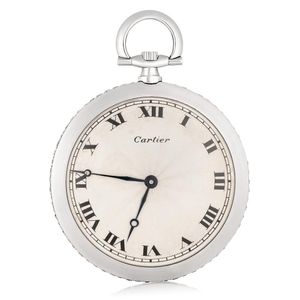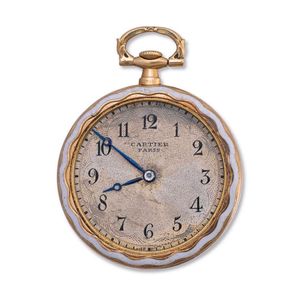Pocket watches were the primary timekeeping device for centuries, with origins dating back to the 16th century. In the early days, pocket watches were large and cumbersome, and only the wealthy elite could afford them. However, over time, advances in technology made them smaller and more accessible to the masses.
The earliest pocket watches were made with a simple mechanism consisting of a mainspring, an escapement, and a balance wheel. The mainspring provided power to the watch, while the escapement regulated the movement of the watch hands, and the balance wheel ensured accuracy. These watches were usually worn around the
more...
neck or carried in a pocket, and they were often adorned with elaborate designs and engravings.
In the 18th century, the pocket watch became more popular, and many watchmakers began to experiment with new designs and mechanisms. One of the most significant developments was the introduction of the lever escapement, which greatly improved the accuracy of the watch. Another important innovation was the use of jewels to reduce friction in the movement, leading to increased durability and reliability.
In the 19th century, pocket watches became smaller and more affordable, and they became an essential accessory for the middle class. During this time, watchmakers also began to experiment with new materials, such as gold and silver, and they created watches with intricate designs and patterns. Many of these watches were also equipped with additional features, such as a calendar, a stopwatch, or a second hand.
The 20th century brought about even more significant changes to the pocket watch. The introduction of quartz technology in the 1970s led to the development of the quartz pocket watch, which used an electronic oscillator instead of a mechanical mechanism. This innovation greatly improved accuracy, and it made pocket watches even more accessible to the masses.
Nowadays pocket watches are mostly used as a fashion accessory or a collector's item. They are often made with intricate designs and high-quality materials, and they are prized for their elegance and beauty. However, with the rise of smartphones and digital watches, the practicality of the pocket watch has diminished. Despite this, the pocket watch remains an iconic symbol of a bygone era, and it continues to be cherished by collectors and enthusiasts around the world.
less...
Cartier is a luxury goods manufacturer founded in 1847 by Louis-François Cartier in Paris, France. The company began as a jewelry workshop and soon gained a reputation for producing high-quality, innovative designs. In the late 1800s, Cartier began to expand its product line to include watches and other luxury goods.
In 1904, Cartier moved to a new location on the prestigious Rue de la Paix in Paris, which further solidified its reputation as a leading luxury goods manufacturer. The company continued to expand throughout the early 20th century, opening stores in London and New York City
more...
.In the 1920s and 1930s, Cartier became known for its Art Deco designs and its use of precious materials such as gold and diamonds. The company also began to produce a wide variety of luxury goods, including pens, lighters, and cigarette cases. In 1917, the company was sold to the jeweller Alfred Cartier, Louis-Francois' son, who further developed the brand.
During the 1950s and 1960s, Cartier continued to be a major player in the luxury goods market, and it began to develop its own line of perfumes and accessories.
In 1972, the company was acquired by a consortium led by Joseph Kanoui, who helped to expand the company's presence in Asia and the Middle East.
Today, Cartier is a subsidiary of the Richemont group and it continues to produce a wide range of luxury goods, including watches, jewelry, and leather goods. It is known for its high-quality craftsmanship, distinctive design, and iconic brand.
less...







 Loading more...
Loading more...